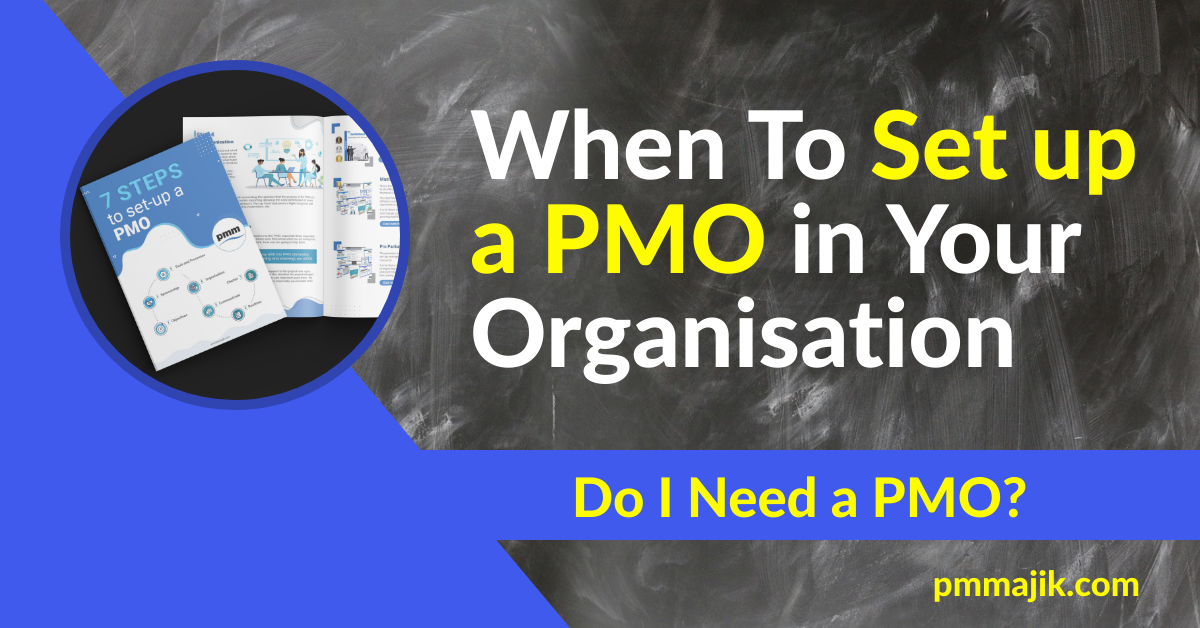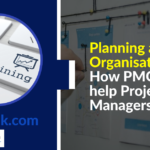When you’re at the point of asking if your organisation needs a project management office (PMO), it’s likely that your business is at or close to the point of creating one. It is important to time it right, so we’re going to explore the right time to set up a PMO in your organisation.
Every business is different, and taking the step to pitch for and set up a PMO isn’t an exact science. Elements such as your organisation size, strategic goals, and project complexity will all filter into the choice to set up a PMO.
To help you begin the analysis of whether you need a PMO for your projects, we’re going to look at:
- The industries where PMOs are most common
- What to look for in terms of business and project performance
- When in your business lifecycle, a PMO is needed
Each of these will be expanded on posts over the coming weeks.
What industries and sectors need a PMO?
Generally speaking, if your business runs many projects, a PMO will be beneficial, no matter the industry. However, being aware of where it is most common to find PMOs will help you assess whether the need is coming down the track and whether the project managers in your business will be used to working with this type of set-up.
If your business is operating in these industries, it is likely your work is project-oriented, and you should be considering a PMO soon:
- IT and computing
- Construction and engineering
- Financial services
- Pharmaceuticals and clinical products
- Public sector and government contracts
- Energy and utilities
- Manufacturing
- Telecommunications
Not only will your project managers and workers be familiar with the PMO concept, but it will also be easier to find PMO staff with relevant experience since these are the industries where they will have cut their teeth.
What business indicators suggest an organisation needs a PMO?
A business shouldn’t have a PMO just because every other one in the sector does. There are other factors that need to be taken into account; such as how the business and current projects are performing.
Some of the indicators you should be looking at when deciding to create a PMO include:
- Project success rate – when projects start to slow down and become less successful, a PMO can get a handle over them.
- Resource utilisation – as projects start to share resources or requirements become more complex, a PMO can take over the administration.
- Portfolio health – understand where current projects are and how they are performing against expectations; a PMO can control projects more.
- Project delivery time – on-time delivery is vital for a growing project portfolio, so when delivery times aren’t being met, a PMO can be charged with taking control.
- Cost performance – are your projects able to report on and actively control costs? A PMO can bring costs under control.
- Risk management – all projects contain risk, and as they get more complex, the risks can be harder to identify without an overarching PMO.
- Capacity for change – your organisation needs to be ready for the upheaval of a PMO, such as having few projects in the pipeline and spare resources where possible.
When in the business lifecycle do I need a PMO?
Depending on how project-heavy your business is, you may need a PMO from the beginning or only as you begin to carve out tasks into projects under project managers.
Here are some indicators within your business and projects that could tell you a PMO is needed:
- More complex projects start to need more admin and support structures.
- Project standards deviate from what you’d expect, and projects are delivered in different ways.
- Resources become inefficient as skills are needed across projects or hardware needs to be shared.
- Projects begin to fail and start to not deliver on ROI or other expectations.
- Strategic alignment is lacking, and projects struggle to deliver business goals.
- Stakeholder expectations aren’t met, and customers and clients begin to express dissatisfaction.
When does a business need a PMO?
While each business is different, there will be common indicators to suggest the right time to set up a PMO within the organisation. You need to consider the industry you operate in, business indicators, and wherein the business lifecycle you’re currently operating.
For more information on setting up a PMO
You can find out more information by visiting How to set-up a PMO. This provides the details of the core steps to design and implement a PMO. You will also find the links to download my FREE guide as a gift to you, 7 Steps to Set-up a PMO.




